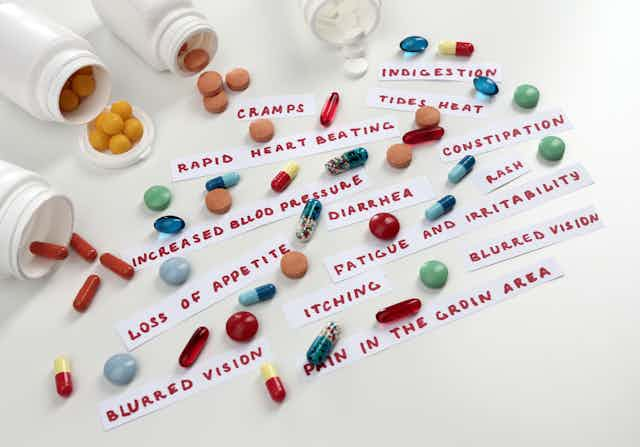It has been illegal to treat humans like guinea pigs since the Nuremberg trials, in which Nazi doctors were punished for doing unspeakable things to prisoners. These days, we have to explain the experiment to the people taking part in trials for new treatments and get their permission (their “informed consent”).
Specifically, we have to tell them about the risks of taking part. So in a trial of a new drug, we have to tell patients about all the possible side-effects. In ethical geek-speak, we have to preserve patients’ autonomy by giving them enough information to make an autonomous decision. Which is fine, up to a point.
It is also an ethical requirement to avoid unnecessarily harming patients. A recent study published in the BMJ Journal for Medical Ethics shows that the relatively recent discovery of so-called nocebo effects – a result of the patient’s expectation that the treatment will harm them – means that harm is being done by the way we inform patients about the trial in which they are taking part.
The study describes a multicentre randomised trial of aspirin versus sulfinpyrazone for treating unstable angina. Because of differences in individual hospital review processes, patients either received or did not receive a statement outlining possible gastrointestinal side-effects. This resulted in a sixfold increase in the number of people withdrawing from the study because of subjective, minor gastrointestinal symptoms, which suggests that the warning about side-effects may prompt patients to expect and subsequently experience them (nocebo effects).
An earlier very large study with over 250,000 patients who took placebo pills in clinical trials found that half of them reported some side-effect, such as pain or nausea, but also more serious things. One in 20 dropped out of the trial because of a side-effect. Some of these were common things, such as back pain, that can happen whether or not someone is in a trial. But our analysis showed that the way patients were told about the side-effects caused many of them.

How can we stop harming patients with nocebo effects while respecting their autonomy? The answer is simple: tell them everything they want to know about side-effects, but tell them in the right way.
In the trials I have been involved in, patients have reported being scared by the way potential side-effects are shared. Yet the ethics committee usually insists that we keep the scary language. The ethics committee’s insistence is understandable from a medico-legal perspective. They are concerned about outlier cases where a patient might say they were not sufficiently well informed about the potential harm they experienced.
The problem with this approach is that it violates the other patients’ right to choose how to be communicated with – their autonomy. Changing the ethics committee’s worries may require that they be equally scared of a court case where a patient decided not to enrol in a trial because of the scary way risks were presented and subsequently sued for missing an opportunity.
I hope my recent study addresses this problem without court cases. Violating autonomy by force-feeding risk information to patients shows that the debate about presenting risk information requires balancing different aspects of autonomy with other ethical principles.
How to avoid nocebo harms
Nobody believes we should prevent patients from learning about all the negative side-effects of their treatment. These are all available on the internet, so attempts to hide them would fail anyway.
What they don’t know won’t hurt ‘em. Don’t tell patients about unlikely risks if telling them outweighs the benefits. Most of us volunteer for this option by not reading the small print of over-the-counter drugs we take. I bet you didn’t you know that rare side-effects of aspirin include ruptures in the wall of the stomach or intestine, bleeding in the skull, hives, seizures, trouble breathing and black tarry stools. Yet these are described on the small print of every aspirin pack you buy.
Personalised consent. As much as it is their right to know about them if they want to, it is a patient’s right not to know if they don’t. Doctors and researchers can ask patients how much they want to know and tell them as much. They can tell them where to get more information later on (for example, on a website).
Positive framing. Just over 200 healthy adult volunteers were given a placebo described as “a well known tablet available without prescription”. They were randomly assigned to either be told about a risk in the standard way, such as “Common, one in 10 people will experience this side-effect”). Or they received positively framed wording, such as “Uncommon, 90% of people will not get this side-effect”. Those who received the positively framed information reported fewer side-effects. Other studies have reported similar findings. The content of the information is the same in both cases, but the way it is conveyed seems to affect the risk of harm.
We don’t want to be treated like guinea pigs. And we don’t want to be harmed if it can be avoided. Let’s make informed consent more ethical by balancing the need to tell with the need to tell the right way.

This article is part of a series tied to Medicine made for you, a series by The Anthill podcast on the future of healthcare and how it could soon get a lot more personal. Read and listen more here.

